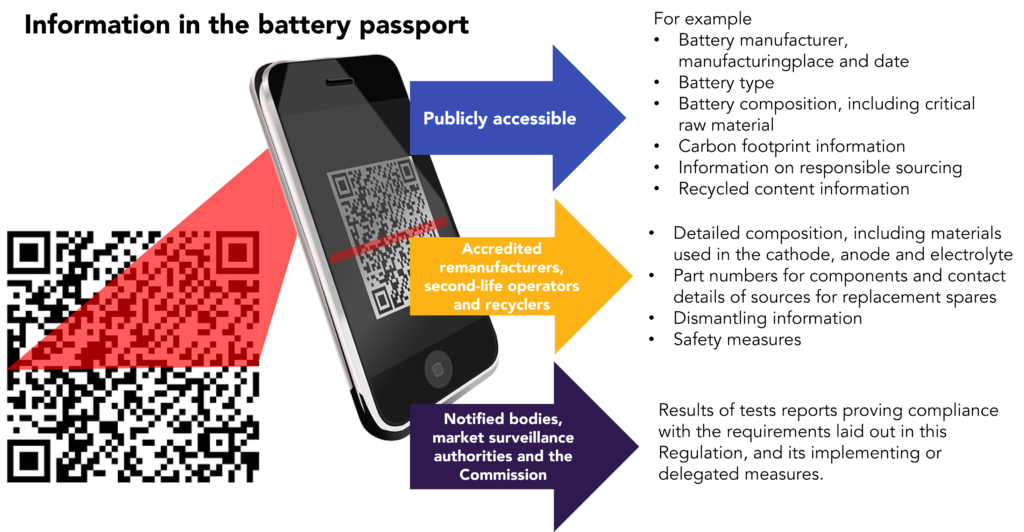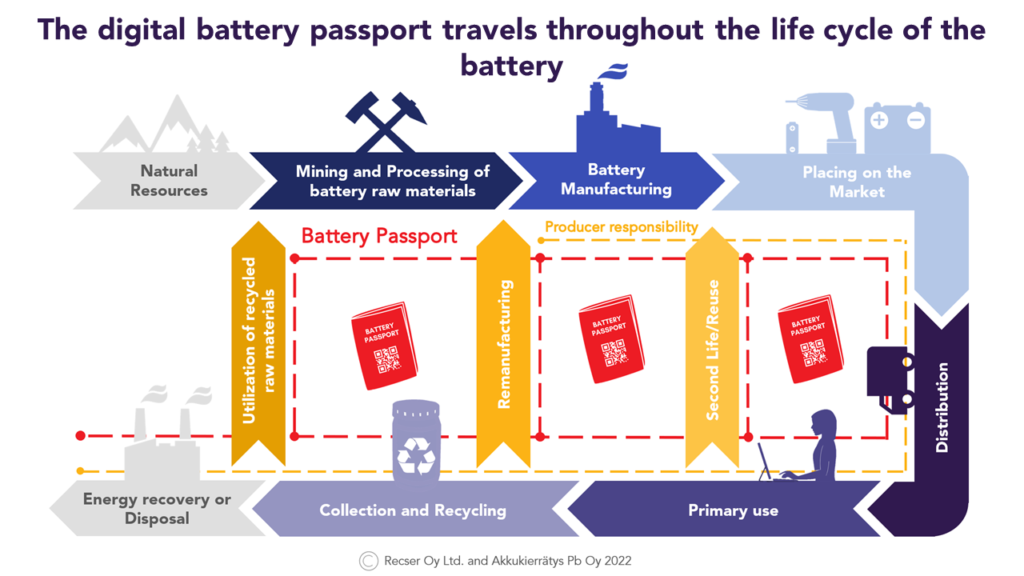
The upcoming EU Batteries Regulation proposes a digital product passport for accumulators that would feature individualised information about each accumulator’s manufacturer, raw materials and carbon footprint, as well as responsible procurement and recycled content. The passport would be a requirement for industrial and electric vehicle accumulators, the power of which exceeds 2 kWh.
The system resembles that of personal passports, and its objective is to provide reliable and transparent data about the lifecycle impact of accumulators. The purpose of the battery passport is to establish unified rules for all operators for indicating the social and environmental impacts of the value chain. Similar digital product passports are being planned for other product groups as well.
Valmet Automotive is hoping for one standardised model
Manufacturing automotive accumulators in Salo and Uusikaupunki, Valmet Automotive is carefully monitoring the progress and potential requirements of the Batteries Regulation.
“In practice, the battery passport means a QR code that is attached to the accumulator and used to send data to a cloud. The purpose of the data cloud is to collect information about the different stages of the accumulator’s lifecycle. There are various solutions on the market for implementing the passport, but a completely ready solution does not exist yet. Our hope is that one standardised model will be developed for the battery passport and used as a standard by all operators, even globally,” Sustainability Manager Sanna Puro from Valmet Automotive’s accumulator business department says.
Information to be sent to the data cloud on the blockchain principle
The idea of the battery pass is for every part of the supply chain to enter their own data into the system in accordance with the blockchain principle. The objective is for the information entered into the battery passport to be accurate, up-to-date and verifiable, with the party placing the accumulators on the market assuming responsibility for it.
In accordance with the Batteries Regulation, the EU Commission will establish an electronic information exchange system for accumulator data. The Commission will also determine the format of the data available in the system, as well as rules for using and sharing the data in the system. Current topics of discussion include questions such as who will have access to what data and how.
“First and foremost, the battery passport will require information management from the operators of the value chain. Here at Valmet Automotive, we already have the necessary information as regards our own operations. A bigger challenge will be to have the entire supply chain involved, as we are dealing with a global market,” Puro explains.

Data also for manufacturing more sustainable accumulators
Puro believes that the battery passport and the data collected onto it would also benefit accumulator manufacturers.
“In particular, data collected from the time that the accumulator is in use would be very valuable, as it could also be utilised in product development to manufacture better accumulators. This would mean collecting information on how the accumulator could be as long-lasting as possible,” Puro says.
Puro believes that the battery passport can give European producers a competitive advantage if the passport becomes a requirement in the EU market.
“Above all, the battery pass would facilitate efficient circular economy. For example, the passport could be used to monitor more precisely where accumulators end up for recycling. Furthermore, accumulators would come with information about what they contain and what their condition is, which would make their recycling and reuse easier,” Puro explains.
Indication requirements for other accumulators as well
The Batteries Regulation proposes new indication requirements that would promote circular economy, not just for industrial and automotive accumulators but for other accumulator types as well. For example, in the future, accumulators must have a QR code indicating the accumulator’s service life, charging capacity, separate collection requirement, hazardous materials and safety risks. The purpose of these indications is to provide users and recycling plants with information about safe and lifecycle-extending ways to handle accumulators and how they should be recycled.
According to preliminary information, the aim is to have the Regulation enter into force in early 2023, but there is a great deal of variation among transition periods with regard to different requirements. Regulation-level legislation is the EU’s most powerful tool, and it is applied unchanged in every member state once it has been approved in the EU. This means that the Batteries Regulation will unify the national legislation of different countries.
Valmet Automotive EV Power Oy is a member of Recser Oy as a producer of industrial accumulators.
